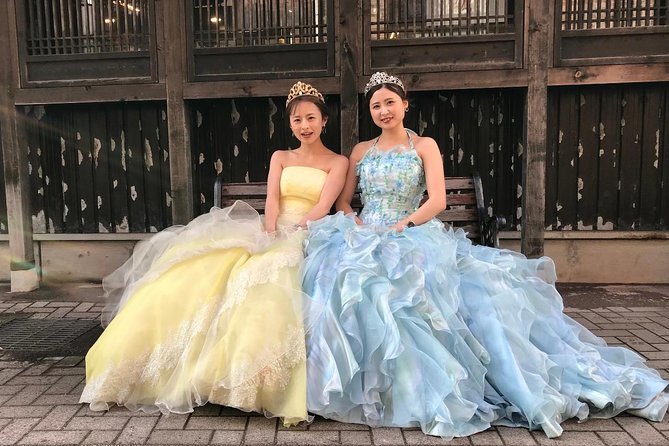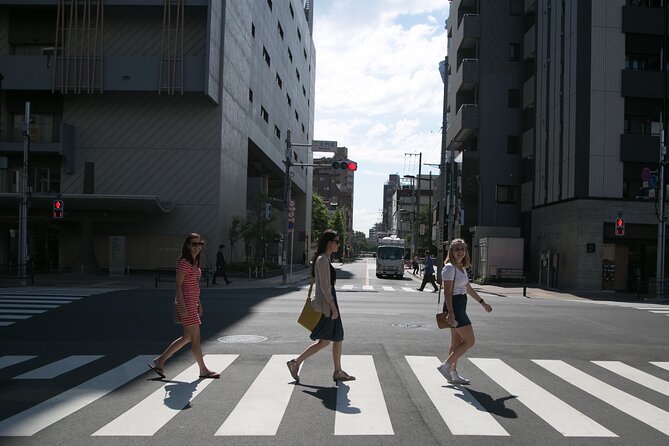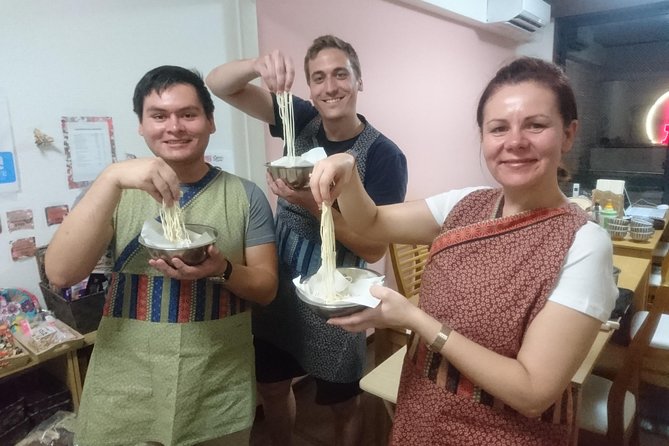Discover the Secrets of Pachinko, Japans Traditional Game
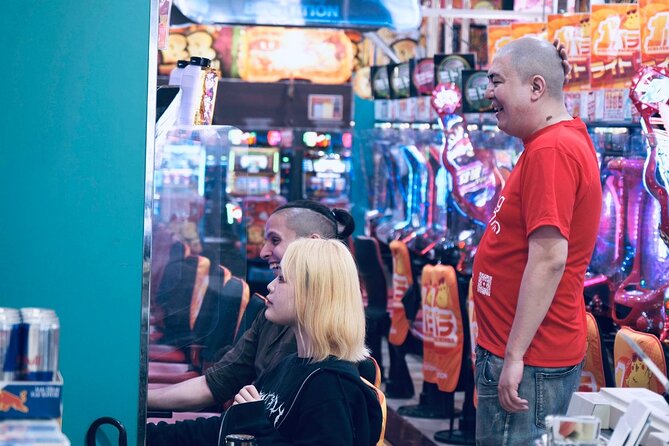
In a bustling Pachinko parlor in Osaka, a curious visitor watches in awe as players skillfully maneuver tiny metal balls through a maze of pins and levers, hoping for a cascade of winnings.
But what secrets lie behind the mesmerizing lights and sounds of this traditional Japanese game? Unravel the mysteries of Pachinko as this article uncovers the fascinating history, intricate gameplay mechanics, and the unwritten rules that govern these vibrant gaming establishments.
Stay tuned to uncover the hidden strategies, cultural nuances, and the allure that keeps players coming back for more.
More nearby cooking classses we've reviewed
Key Points
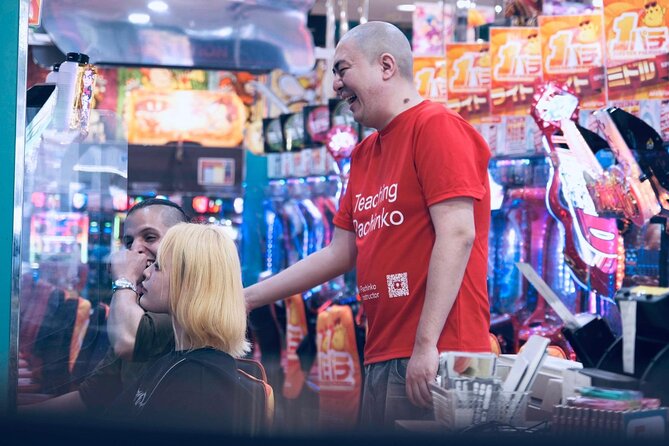
- Pachinko embodies Japanese culture, offering a rich history and significant societal impact.
- Mastering gameplay mechanics like ball control and targeting strategies enhances winning potential.
- Pachinko parlors provide an immersive experience, emphasizing responsible gaming and etiquette.
- Competitive Pachinko showcases top players like Toshiyuki Nishida, inspiring a new generation of enthusiasts.
It's also worth checking out some other tours and experiences nearby.
History of Pachinko

Pachinko, a popular Japanese game, has a rich history that dates back several decades. Its cultural significance is profound, as it has been a staple in Japanese entertainment and gambling culture for generations.
Originally introduced as a form of adult entertainment in the 1920s, Pachinko quickly gained popularity among the masses, transcending social boundaries. This game’s economic impact is undeniable, with Pachinko parlors contributing significantly to Japan’s economy. The revenue generated from these establishments plays a vital role in the country’s financial landscape.
As a cultural icon and a thriving industry, Pachinko has become ingrained in the fabric of Japanese society, representing both leisure and economic prosperity.
How Pachinko Machines Work

Among the array of flashing lights and intricate designs, players can observe how the metal balls cascade through a maze of pins and obstacles within the Pachinko machines. Understanding the mechanics behind these machines adds a new layer to the player experience. Below is a table illustrating the basic elements of a Pachinko machine:
| Component | Function |
|---|---|
| Plunger | Launches balls into play area |
| Pins | Direct the balls’ path |
| Tulips | Catch balls for potential bonuses |
| Jackpot Lane | Leads to big rewards if balls enter |
Pachinko Parlors in Japan
Pachinko parlors in Japan cater to a diverse range of players, offering a vibrant and immersive gaming experience in a unique cultural setting. These establishments are deeply rooted in Pachinko culture, providing players with a thrilling and fast-paced environment to enjoy this traditional game.
From the moment players step into a Pachinko parlor, they’re greeted with rows of colorful and noisy machines, creating an atmosphere unlike any other. While Pachinko can be a source of entertainment for many, it’s essential to be mindful of the potential risks associated with Pachinko addiction.
Players should approach the game responsibly and be aware of their limits to ensure a positive and enjoyable experience in these lively parlors.
Strategies for Playing Pachinko
Players can enhance their Pachinko experience by employing strategic approaches that maximize their gameplay and potential winnings. When playing Pachinko, understanding winning techniques and avoiding common mistakes can significantly impact one’s success. Here are some key strategies to keep in mind:
| Strategies for Playing Pachinko | Description |
|---|---|
| Winning Techniques | Focus on aiming for the center hole to increase chances of winning. Control the speed of the balls to guide them effectively. |
| Common Mistakes | Avoid overcrowded machines, as they may have lower chances of winning. Don’t rush gameplay; take your time to aim accurately. |
Pachinko Etiquette and Customs
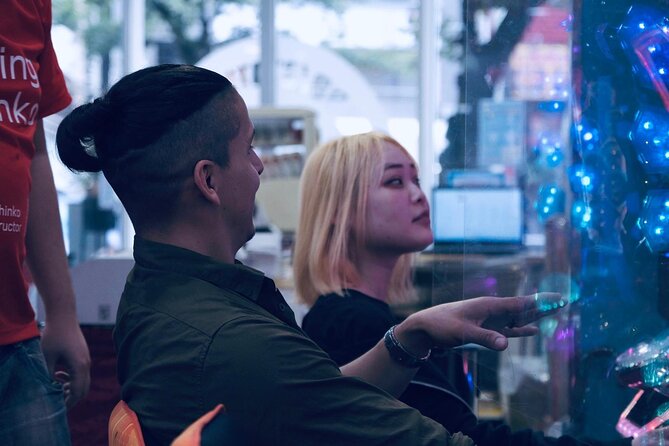
Understanding and adhering to Pachinko etiquette and customs can greatly enhance one’s overall experience in playing this traditional Japanese game.
When entering a Pachinko parlor, it’s customary to remove your shoes and place them in the designated area. Before sitting down at a machine, it’s important to observe the playing area and ensure it’s clean and orderly.
In terms of etiquette tips, it’s polite to keep noise levels to a minimum to maintain a focused atmosphere for other players. Plus, when receiving assistance from staff, a simple bow or nod of thanks is culturally significant.
Respect for other players, the equipment, and the hotel itself are key aspects of Pachinko etiquette that contribute to a harmonious gaming environment.
Famous Pachinko Players
Among the notable figures who’ve made a mark in the world of Pachinko is renowned Japanese entertainer Toshiyuki Nishida.
Nishida isn’t only a talented actor but also a skilled Pachinko player who’s participated in various Pachinko championships and tournaments. His strategic gameplay and deep understanding of the game have earned him a reputation as one of the top Pachinko players in Japan.
Nishida’s success in the Pachinko world has inspired many aspiring players to hone their skills and aim for greatness in Pachinko championships. With his impressive track record in Pachinko tournaments, Toshiyuki Nishida continues to be a prominent figure in the realm of competitive Pachinko playing.
Future of Pachinko in Japan
In considering the future of Pachinko in Japan, the evolving technological landscape and shifting demographics play pivotal roles in shaping the direction of this traditional game.
Technological advancements have introduced digital versions of Pachinko, offering players a more interactive experience. These innovations attract younger generations who are accustomed to digital entertainment. However, the traditional charm of physical Pachinko machines still holds appeal for older players.
The impact on society is multifaceted; while Pachinko parlors remain popular social hubs, concerns about problem gambling persist. Striking a balance between preserving tradition and embracing modernity will be crucial for the future sustainability of Pachinko in Japan.
As the game continues to adapt to societal changes, its longevity may rely on successfully navigating these dynamics.
Frequently Asked Questions
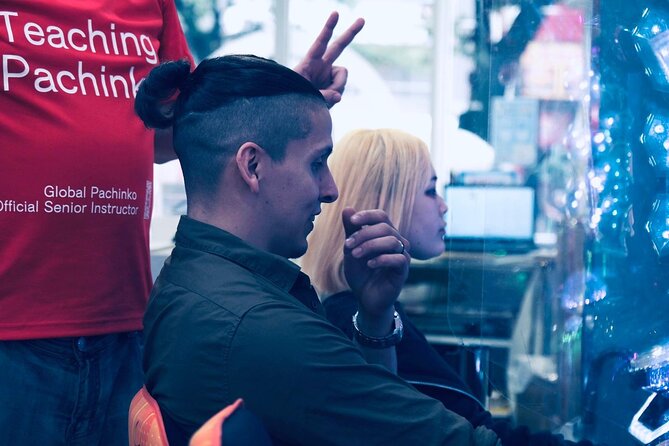
Can Children Play Pachinko in Japan?
Children can play pachinko in Japan under adult supervision. Family-friendly parlors offer kid-friendly games. Age restrictions vary, but it’s a fun activity for families. Ensure to check individual parlor rules and consider the noisy environment when bringing children.
Are There Any Special Events or Tournaments Held for Pachinko Enthusiasts in Japan?
Pachinko enthusiasts in Japan often gather for special events and tournaments. These gatherings showcase the vibrant pachinko community, offering exciting competitions with coveted prizes. It’s a great way to connect with fellow players and celebrate the game.
Are There Any Superstitions or Lucky Charms Associated With Playing Pachinko?
Superstitions and rituals abound in Pachinko culture, with players often carrying lucky charms for success. Beliefs vary from touching specific areas on the machine to using particular tokens. These practices add an intriguing layer to the game.
How Does the Japanese Government Regulate the Pachinko Industry?
The Japanese government implements regulatory measures to oversee the pachinko industry, including age restrictions to ensure responsible gambling practices. These guidelines aim to maintain fairness, transparency, and safety within the sector.
Can You Bring Your Own Pachinko Balls to Play at the Parlors in Japan?
In Japan, bringing your own pachinko balls to play at parlors is generally not allowed due to parlor rules. This is considered against etiquette and customary beliefs. Players are expected to use the tokens/balls provided on-site.
Recap
To sum it up, Pachinko offers a fascinating blend of skill and luck that captivates travelers in Japan. With a rich history, unique gameplay, and vibrant culture surrounding it, Pachinko continues to be a beloved tradition in Japanese society.
Whether you’re a seasoned player or new to the game, the allure of Pachinko is undeniable. Embark on this thrilling journey to uncover the secrets and treasures of Japan’s traditional game, and experience the excitement for yourself.

![[90minutes 5pax] Tokyo-Mt.Fuji Tour:Mt Fuji Helicopter Tour](https://tokyoezine.com/wp-content/uploads/90minutes-5pax-tokyo-mt-fuji-tourmt-fuji-helicopter-tour.jpg)
